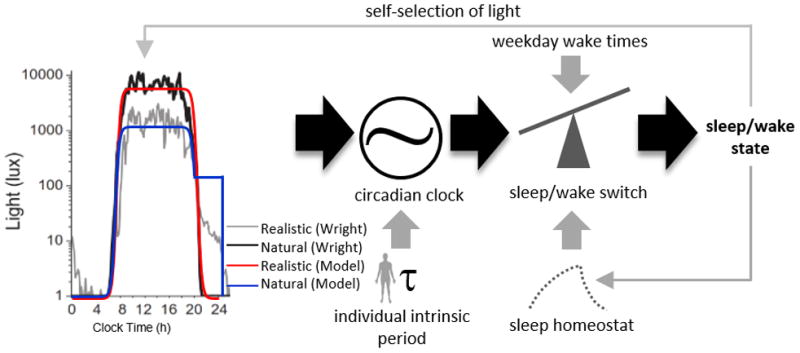Figure 1.

Model schematic with different light exposure patterns. Left panel, light exposure patterns from Wright et al. (2013). Right panel: model schematic. The model alters the light profile based on its sleep/wake state, which then is used as input into the circadian clock. The circadian clock’s phase is influenced by the light profile as well as the intrinsic circadian period. The circadian phase, along with the preset wake and sleep times and sleep homeostat, then drives the sleep/wake switch, which feeds back into the light profile pattern.
